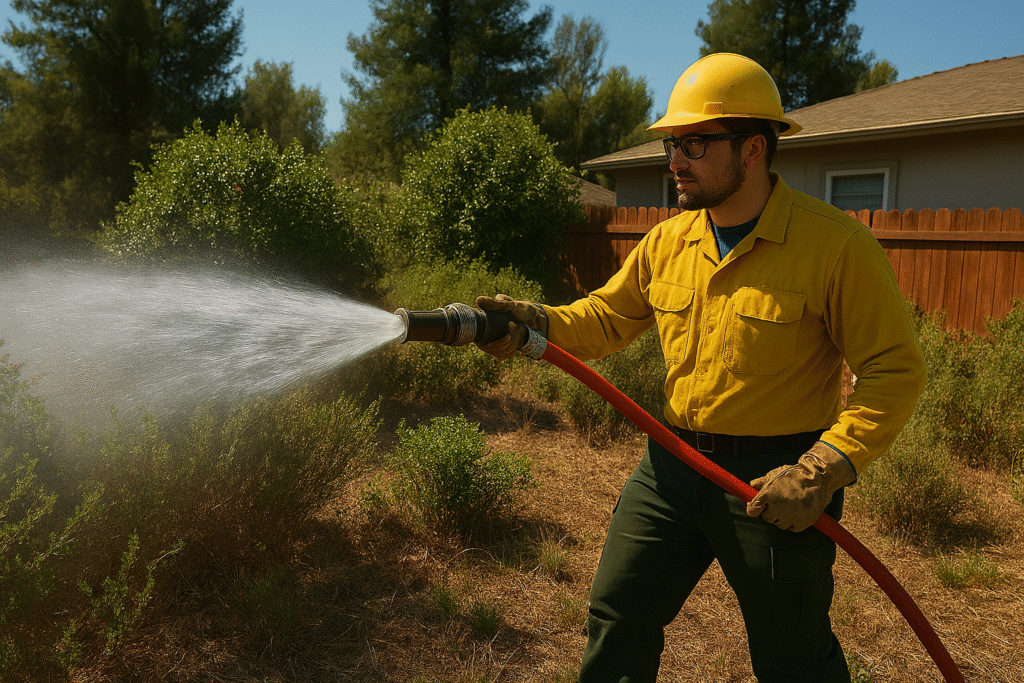
This is your part in preventing a Neighborhood Wildfire
🛡️ First Line of Defense: Treating Vegetation with Fire Retardant

The image above shows us applying our clear fire retardant to vegetation in a residential yard. This kind of hands-on mitigation is a powerful visual reminder that wildfire prevention starts at home—with informed choices and early action.
The first line of defense to prevent neighborhood wildfires is to treat all vegetation with our fire retardant.
In high-risk areas like the wildland-urban interface, where homes meet flammable vegetation, proactive treatment can mean the difference between containment and catastrophe. Fire retardants—whether applied by professionals or through homeowner kits—create a protective barrier that slows ignition and reduces flame spread. This buys precious time for firefighters and evacuation as well as it helps prevent embers from turning shrubs into fuel.
🔍 Why It Matters
- Vegetation is fuel: Dry grasses, shrubs, and even ornamental plants can ignite quickly under an ember attack.
- Retardants reduce flammability: By coating vegetation with a fire-resistant layer, retardants disrupt the combustion process.
- Strategic application saves homes: Targeting vulnerable zones—like under eaves, on and around fences, and around decks—can dramatically improve survivability.
🧰 What Homeowners Can Do
- Identify ignition-prone areas: Focus on vegetation within 5–30 feet of structures.
- Use approved products: Our fire retardants are rated for residential use and are approved and used by the FDA- Cal-Fire and the National Forest.
- Reapply as needed: Most treatments last weeks to months depending on weather exposure.

Leave a Reply